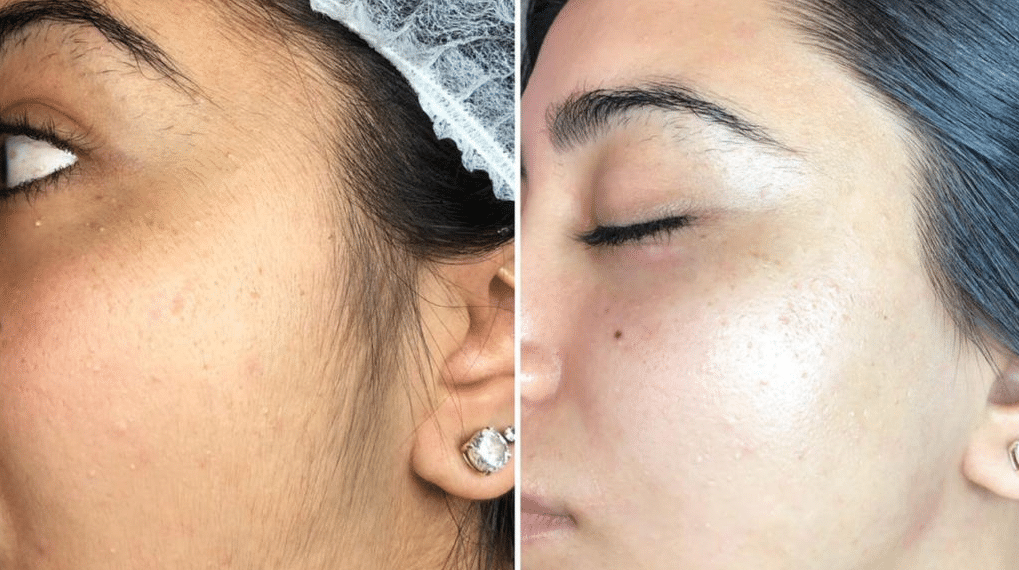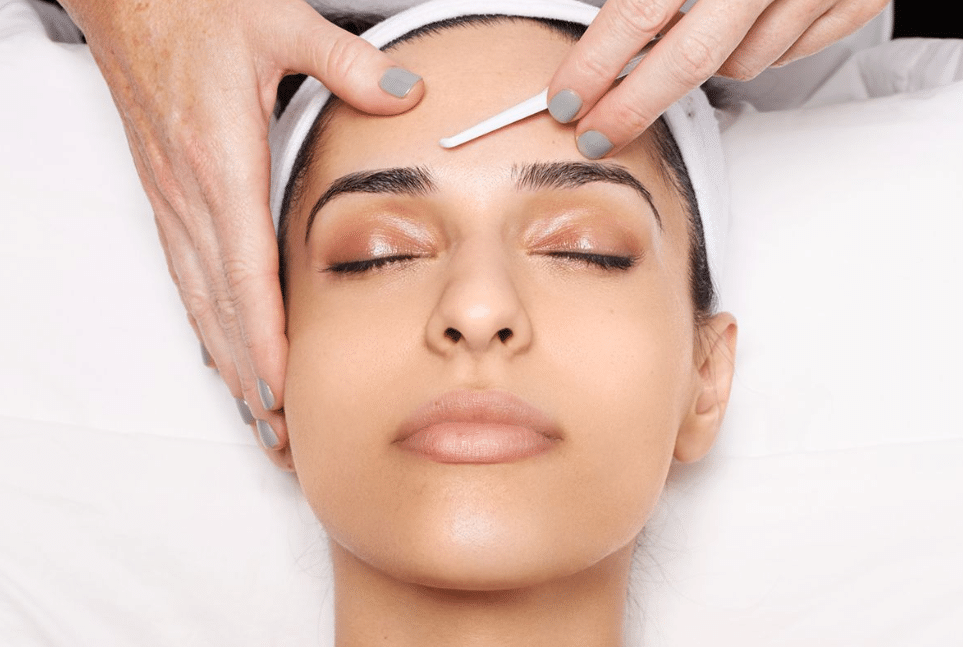Dermaplaning is a skin treatment that uses an exfoliating blade to skim dead skin cells and hair from your face. It’s also called micro planning or blading. Dermaplaning aims to make your skin’s surface smooth, youthful, and radiant. This treatment claims to remove deep scarring from acne and uneven pockmarks on your skin. It’s also used to remove “peach fuzz,” the short, soft hairs on your face.
This is a thing now: Women are shaving their faces. If that sounds strange, well, to be honest, it sounded strange to us, too. But we’re not talking about your average shaving cream and Bic razor in the bathroom mirror situation. In reality, women are having their faces shaved by dermatologists, who call the procedure dermaplaning. Really that’s just a fancy name for what amounts to a scalpel facial. (You might have seen it in action late last year when this video of the treatment went viral.)

As a Filipino-Chinese girl, it’s no secret that all of the hair on my body is pretty dark. Although the hair on my head is really thin and fine, somehow, the rest on my arms, legs, and face is thick and coarse. I remember being so envious of my older sister and mom because their leg hair was thin enough that they didn’t have to shave, while I was made fun of in middle school for having hairy legs. It led to even more insecurity as I grew up and began noticing hair growing on my face, too.
Welp, not only does it grant you three wishes, but—JK, sorry. The results can vary for everyone, but realistically, you can expect to see smoother skin, zero peach fuzz (until it grows back, of course), and slightly brighter-looking skin. And because you’re removing all your dead skin cells, your skincare products will better penetrate your skin when you apply them, making them all the more effective.
Get Rid Of Peach Fuzz On The Face
During a dermaplaning session, the dermatologist or esthetician uses a medical-grade scalpel to scrape (not cut!) across the surface of the skin. The main reason people do it is to remove the vellus hairs on their faces, also known as peach fuzz. Peach fuzz can appear almost colorless, blonde, gray, or brown (or the same color as the hair on your head).
Everyone has these fine vellus hairs coating our bodies, and they are meant to keep us warm and add another layer of protection to the skin. But some people’s vellus hairs are thicker and more visible than others, and so they might want to have it removed. Dermatologist Rosemarie Ingleton, M.D., tells SELF that it can be tough to get rid of these hairs with typical hair-removal methods like waxing and threading, which makes dermaplaning a better option.
Dermaplaning Cost
Dermaplaning isn’t covered by insurance, and treatments are charged per session. Costs per session may vary depending on the cost of living in your area and the provider you choose. Get a cost estimate before you book your appointment, but be prepared to spend up to $250 on one 30-minute session of dermaplaning.
You may be advised to add a chemical peel to your dermaplaning treatment. Right after dermaplaning, your skin is able to deeply absorb and benefit from a chemical peel in a way it can’t at other times. A chemical peel can cost an additional $150 to $300.
Dermaplaning Tool
Tinkle Eyebrow Razor
While the label says “eyebrow razor,” these small but mighty hair removers can be used for your whole face. The blades are extra sharp so there’s no tugging or pulling when you swipe it across your skin.
Dermaflash Luxe Anti-Aging Dermaplaning Exfoliation Device
Accompanying the stainless steel blade is a subtle sonic vibration that better helps to remove facial hair and dull skin for a fresh glow. The kit comes with four blades (use a new one each time for the best results) along with a travel-size cleanser and moisturizer to help your newly revealed skin stay fresh and glowing.

Michael Todd Sonicsmooth At-Home Dermaplaning Kit
Michael Todd’s Sonicsmooth kit harnesses the complexion-enhancing properties of sonic technology to remove unwanted facial hair while correcting rough skin texture, enlarged pores, uneven skin tone, fine lines, and dullness.
Dermaplaning Side Effects
The person you visit for dermaplaning should use a sterile blade that you see being removed from a sterile pouch to avoid potential skin irritation or infection. If you’re worried about this, you might want to consider a board-certified dermatologist over an aesthetician.
In theory, your facial hairs shouldn’t grow back thicker, says Kavita Mariwalla, MD, a dermatologist in West Islip, New York. But just like with laser hair removal, there can be unexpected cases of hair darkening and perceived thickening—especially around the sideburns and chin area (spots where thinner hairs are more prone to turn into those thick beard-like hairs), she says.
What Are The Side Effects Of Dermaplaning?
Dermaplaning is a low-risk procedure. Side effects may include slight redness in your face in the hours after getting the treatment. Some people develop whiteheads on their skin in the day or two after dermaplaning. Infection and scarring are rare after dermaplaning, but they do occur.
How Much Does It Cost For Dermaplaning?
How Much Does It Cost? Dermaplaning prices range from $75 to $150 and up. Many dermatologists’ offices or medispas that have it on the menu will offer it with a chemical peel or facial because it allows products to sink deeper into the skin with the aim of quicker or better results.
Is Dermaplaning Good For Your Skin?
“Peels help to improve texture, tone, acne, and fine lines whereas dermaplaning simply remove hair,” she says. “They are not equivalent at all, and many peels give deeper exfoliation than a scalpel.”
Does Hair Grow Back After Dermaplaning?
You won’t grow a beard after getting dermaplaning. Your hair will grow back, but it will just look like it did before you had the treatment. A surgical blade is used, which just shaves the ends from the fine vellus hairs. Nothing happens to the follicles themselves, so the growth of the hair isn’t changed.”